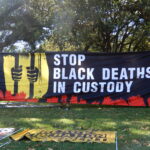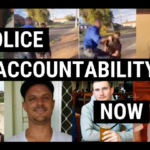Police Shoot and Kill Unarmed, Surrendering Man

Shocking footage has emerged from Texas showing two police officers shooting a shirtless man who is standing outside his home with his hands up in surrender. Gilbert Flores, 41, was shot twice and died at the scene.
The official police report says that Flores initially resisted arrest and that nonlethal weapons failed to bring him under control. But what could ever justify shooting dead an unarmed man when he is standing several metres away from officers with his hands up in surrender?
Texas police are reportedly angry that the video footage was published, calling the act “unethical” – but perhaps they should be more concerned about their officers fatally shooting a man while he was surrendering.
With over 700 civilians shot dead by US police already this year, perhaps it’s time to reconsider police training and protocols when it comes to the use of lethal force, as well as better measures to bring police officers to account when they unjustifiably kill people.
When is Lethal Force Justified?
In both the US and Australia, police are only permitted to use lethal force where an individual poses an immediate threat of death or grievous bodily harm to the officers or others.
If an officer uses lethal force that is not justified, they may be charged with murder or manslaughter just like any other person. This is an important legal safeguard to ensure that police officers do not kill people without sufficient reason. After all, they are supposed to protect members of the public – not harm them.
The law in the United States uses the “reasonable force” test – which asks whether the officer used an amount of force that was proportionate to the threat. The test is applied on a case-by-case basis.
What Counts as “Reasonable Force”?
Reasonable force is that which the officer believes, on reasonable grounds, is necessary to stop an immediate threat of danger.
This test is based on two factors: “proportionality” and “necessity”. Those concepts were best defined in the 1985 decision of Tennessee v. Garner. The case involved a police officer who shot a man in the back of the head while the man was climbing over a fence, attempting to flee arrest.
Before that case, there was a common belief amongst police officers in the US that they could shoot any suspect that was fleeing the scene of an alleged “felony” (serious crime).
But the court’s decision in Garner made it clear that such an act was not normally a “necessary” or “proportionate” response. The court sis, however, add that:
“If the suspect threatens the officer with a weapon or there is probable cause to believe that he has committed a crime involving the infliction or threatened infliction of serious physical harm, deadly force may be used if necessary to prevent escape, and if, where feasible, some warning has been given.”
The 1989 decision of Graham v. Connor found that the proper application of reasonable force “requires careful attention to the facts and circumstances of each particular case.”
These decisions make it clear that police must have clear and compelling reasons to fatally shoot people.
The Flores Incident
Police were called to Mr Flores’ home after reports of a domestic disturbance. They say that Flores was initially armed, although they do not say what he was supposed to have been armed with. They say that he refused to be arrested.
Whatever the initial situation, the video clearly shows Flores walk outside his home and stand still with both hands up. He is not attempting to flee the scene. He is several metres away from police and does not pose an immediate danger to anyone. He is shirtless, unarmed and surrendering. Two shots are then fired at him.
It is difficult to see how this killing can be justified by any police department or police apologist.
Filming Police
Thankfully for Mr Flores’ family, a man who was working at a nearby house filmed the incident, later selling it to the media.
The Bexar County Sheriff’s office is angry that the video was released to the public, calling the act “unethical”.
The officers involved in the incident have been put on paid administrative leave pending an investigation. It is unclear whether they will be disciplined in any meaningful way, let alone charged with murder or manslaughter. One thing is clear though – there would be little to no prospect of disciplinary action against them if the incident had not been filmed.
What Should be Done?
Jason Steorts of the Atlantic reviewed several recent police shootings in the US, stating that “a string of questionable police killings demonstrates the need to reevaluate laws that govern the use of lethal force”.
He is of the view that better laws, more thorough training, stricter protocols and clearer guidelines are required to lower the incidence of unjustified police shootings, and to bring offending officers to account.
With the dramatic rise in fatal shootings by Australian police in recent years, perhaps the same needs to occur here.






